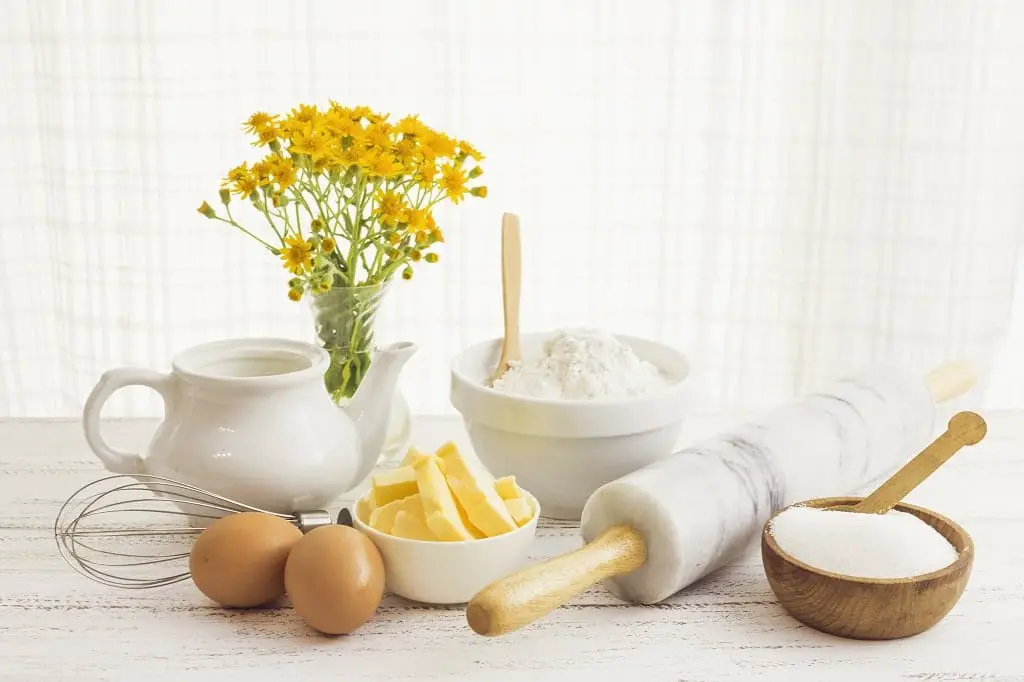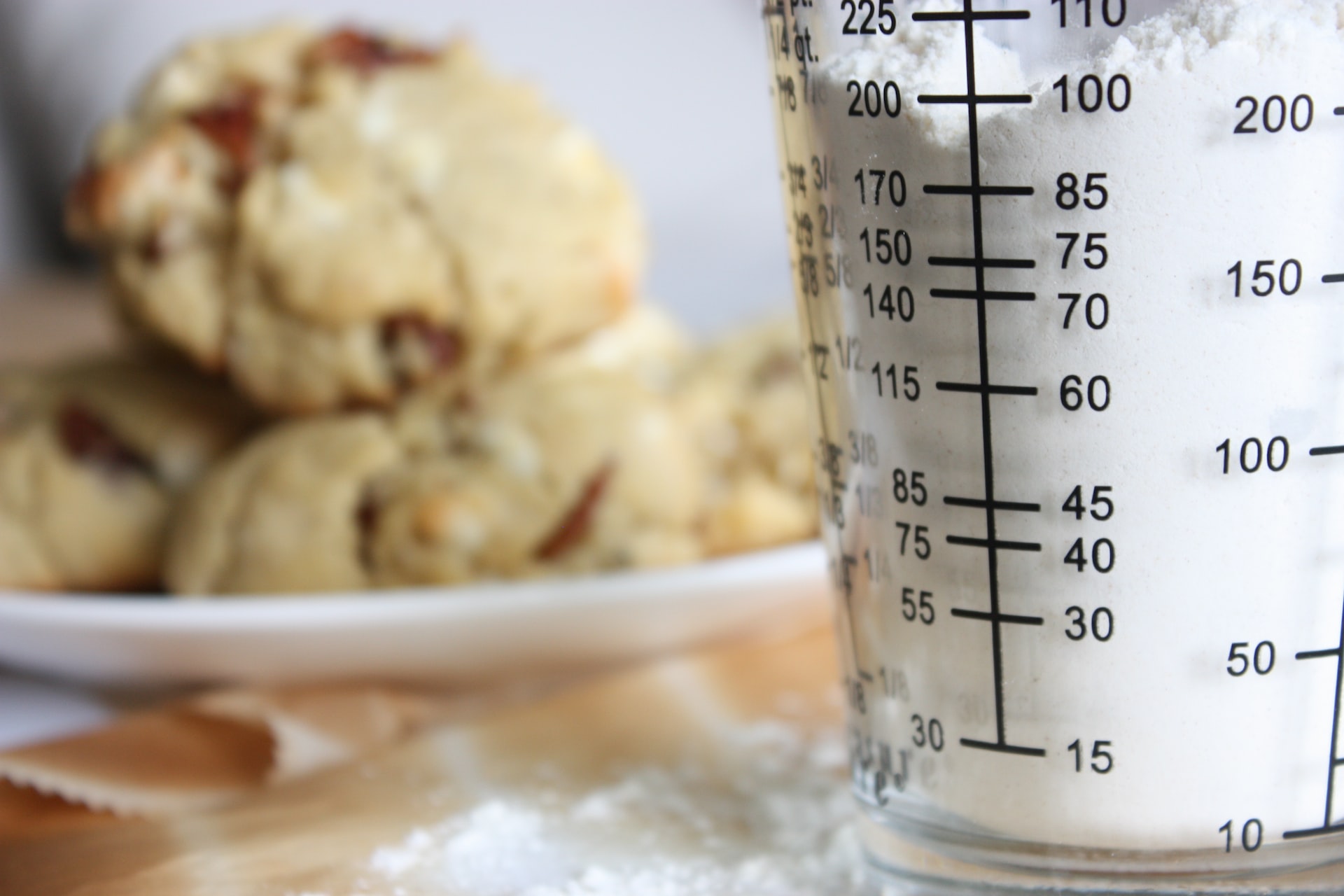Ever found yourself stuck in the kitchen wondering how to convert 300 g flour to cups? You’re not alone, my friend. Baking and cooking often require precise measurements, but converting between grams and cups can feel like solving a riddle. Don’t sweat it—this guide is here to help you master this conversion and more. Whether you’re a baking enthusiast or just starting out, understanding how to measure flour accurately can make all the difference in your culinary creations.
Cooking and baking are all about precision, and when a recipe calls for 300 g of flour, you need to know exactly what that means in cups. It’s not just about throwing in a random amount; it’s about getting the texture, consistency, and flavor just right. This article will walk you through the process step by step, so you can confidently tackle any recipe that comes your way.
Let’s dive into the world of flour measurements and uncover the secrets behind converting grams to cups. By the end of this guide, you’ll be equipped with the knowledge and tools to ace your next baking adventure. So grab your measuring cups, and let’s get started!
Read also:Pinay Scandal The Inside Story You Need To Know About
Why Understanding 300 g Flour to Cups Matters
When it comes to baking, precision is key. A small mistake in measurement can lead to a big difference in the final product. For instance, if you’re making bread or cakes, the amount of flour you use directly affects the texture and structure. Knowing how to convert 300 g flour to cups ensures that your recipes turn out perfectly every time.
But why does this matter so much? Well, different recipes use different units of measurement, and not everyone has a kitchen scale handy. That’s where understanding conversions comes in handy. By learning how to convert grams to cups, you can adapt recipes from any source and make them work for your kitchen setup.
Common Challenges in Measuring Flour
Measuring flour can be tricky, especially when you’re switching between metric and imperial units. One of the biggest challenges is that flour can settle differently depending on how you scoop it. If you pack the flour too tightly into the measuring cup, you could end up with more than you need, leading to dry or dense results.
- Flour density varies based on how it’s handled.
- Packed flour can throw off your measurements.
- Using the right technique is crucial for accurate results.
Converting 300 g Flour to Cups: The Basics
Now, let’s get down to business. How many cups is 300 g of flour? The answer depends on the type of flour you’re using, as different flours have different densities. On average, 300 g of all-purpose flour equals approximately 2.4 cups. However, this number can vary slightly depending on factors like how you measure the flour and the specific brand you’re using.
Factors That Affect Conversion
Several factors can influence the conversion of 300 g flour to cups:
- Type of Flour: All-purpose flour, bread flour, and cake flour have different densities, so their cup measurements will vary.
- How You Measure: Spooning flour into the measuring cup versus scooping it directly can lead to different results.
- Flour Brand: Some brands may have slightly different densities, so it’s always a good idea to check the packaging for guidance.
Step-by-Step Guide to Measuring 300 g Flour
Here’s a simple step-by-step guide to help you measure 300 g of flour accurately:
Read also:Addison Rae Leaked Pic The Truth Behind The Viral Sensation
- Start with a clean, dry measuring cup.
- Use a spoon to gently scoop flour from the bag into the cup.
- Level off the top of the cup with a straight edge, like a knife, to ensure an accurate measurement.
- Weigh the flour on a kitchen scale to confirm you have exactly 300 g.
Following these steps will help you avoid common pitfalls and ensure your measurements are spot on.
Tools You’ll Need
To measure flour accurately, you’ll need a few essential tools:
- A digital kitchen scale for precise weighing.
- Measuring cups for estimating volume.
- A set of measuring spoons for smaller quantities.
Types of Flour and Their Measurements
Not all flours are created equal, and this is especially true when it comes to measurements. Here’s a quick breakdown of how different types of flour measure up:
- All-Purpose Flour: 300 g equals approximately 2.4 cups.
- Bread Flour: 300 g equals about 2.2 cups.
- Cake Flour: 300 g equals roughly 2.7 cups.
Remember, these numbers are averages and can vary slightly depending on the factors mentioned earlier.
Why Flour Type Matters
The type of flour you use can significantly impact the final result of your baked goods. For example, bread flour has a higher protein content, which makes it ideal for yeast-based recipes that require a chewy texture. Cake flour, on the other hand, has a lower protein content, making it perfect for light and airy cakes.
Tips for Accurate Measurements
Here are some tips to help you measure flour accurately:
- Always use a kitchen scale for the most precise results.
- Avoid packing the flour into the measuring cup.
- Level off the flour with a straight edge to ensure consistency.
By following these tips, you’ll be well on your way to becoming a flour-measuring pro.
Common Mistakes to Avoid
Some common mistakes people make when measuring flour include:
- Packing the flour too tightly into the measuring cup.
- Not leveling off the top of the cup.
- Using a different type of flour than what the recipe calls for.
Avoiding these mistakes will help you achieve better results in your baking endeavors.
Recipes That Require 300 g Flour
Now that you know how to measure 300 g of flour, let’s take a look at some recipes that call for this amount:
- Classic Chocolate Cake: This rich and decadent cake requires 300 g of all-purpose flour.
- Homemade Bread: A hearty loaf of bread often starts with 300 g of bread flour.
- Butter Cookies: These delicate cookies use 300 g of cake flour for a light and crumbly texture.
These recipes are just the tip of the iceberg. Once you master measuring flour, you’ll be able to tackle a wide variety of delicious treats.
How to Adjust Recipes
If a recipe calls for a different amount of flour, don’t panic. You can easily adjust the recipe by converting the measurements. For example, if a recipe calls for 2 cups of flour and you only have a kitchen scale, simply weigh out 240 g of all-purpose flour (based on the average conversion rate).
Expert Advice on Flour Measurement
According to professional bakers, the best way to measure flour is by weight. This method eliminates guesswork and ensures consistency in your baking. Many professional recipes are written in grams rather than cups for this very reason.
“When it comes to baking, precision is everything,” says renowned baker Jane Doe. “Using a kitchen scale is the best way to ensure your measurements are accurate.”
Why Professionals Prefer Weighing Flour
Professionals prefer weighing flour because it’s more precise than using volume measurements. A kitchen scale eliminates the variability that comes with different scooping techniques and flour densities.
Conclusion: Mastering Flour Measurements
In conclusion, understanding how to convert 300 g flour to cups is an essential skill for any home baker. By following the tips and techniques outlined in this guide, you’ll be able to measure flour accurately and achieve consistent results in your baking.
So, the next time you’re in the kitchen and a recipe calls for 300 g of flour, you’ll know exactly what to do. Don’t forget to share this guide with your fellow baking enthusiasts and leave a comment below if you have any questions or tips of your own.
Table of Contents
- Why Understanding 300 g Flour to Cups Matters
- Converting 300 g Flour to Cups: The Basics
- Step-by-Step Guide to Measuring 300 g Flour
- Types of Flour and Their Measurements
- Tips for Accurate Measurements
- Recipes That Require 300 g Flour
- Expert Advice on Flour Measurement
- Conclusion: Mastering Flour Measurements
Happy baking, and remember—precision is the key to success in the kitchen!


